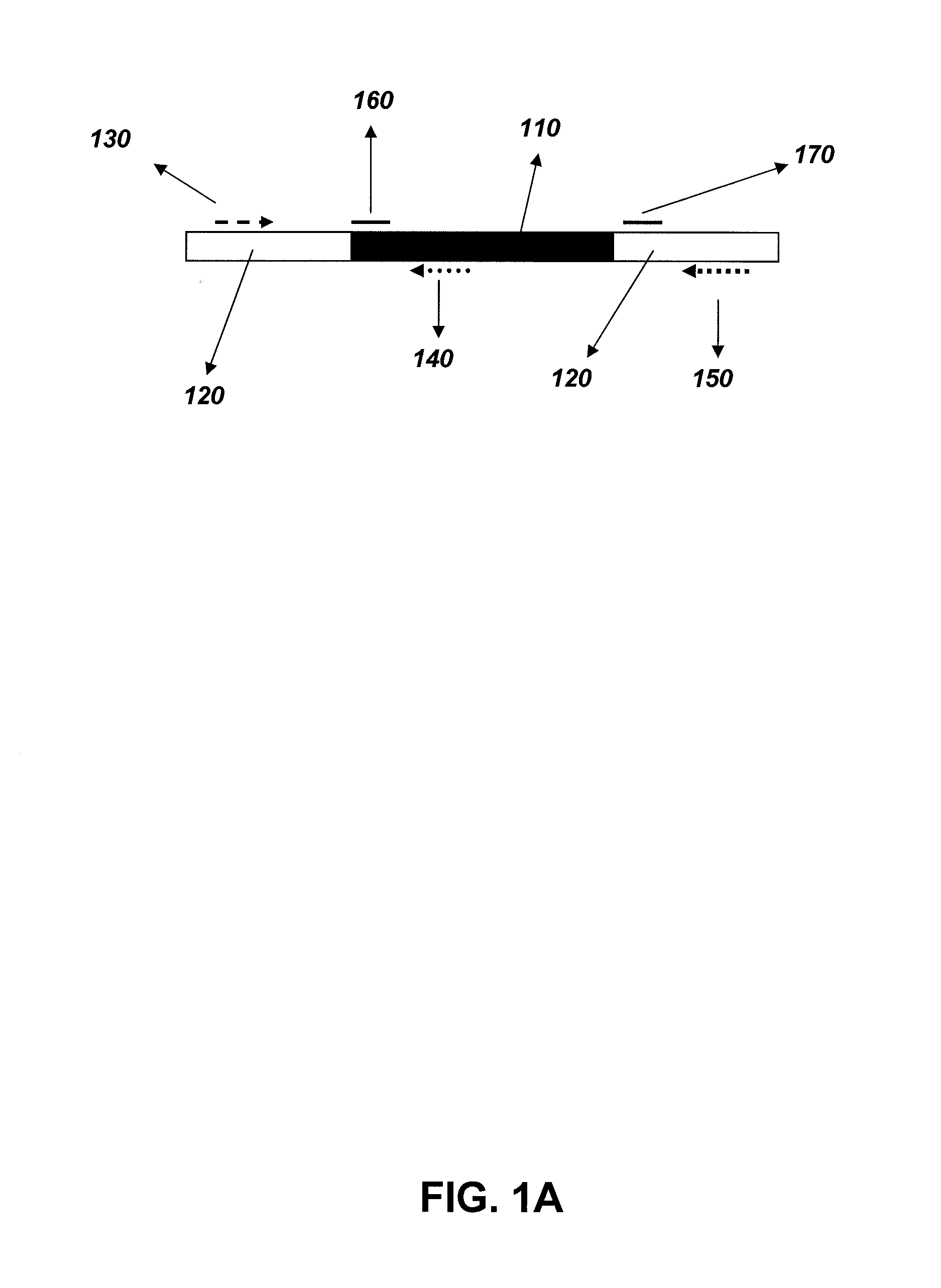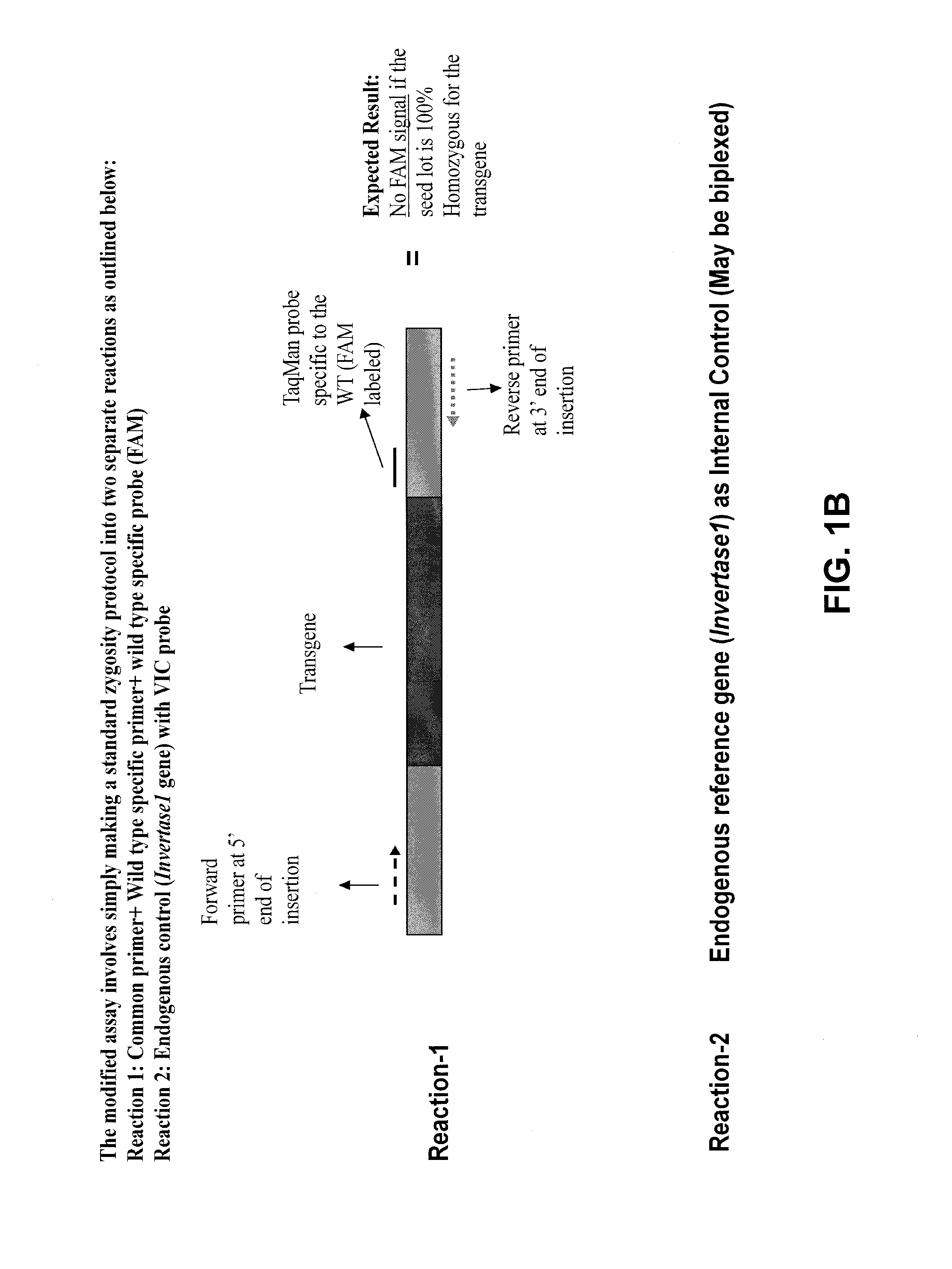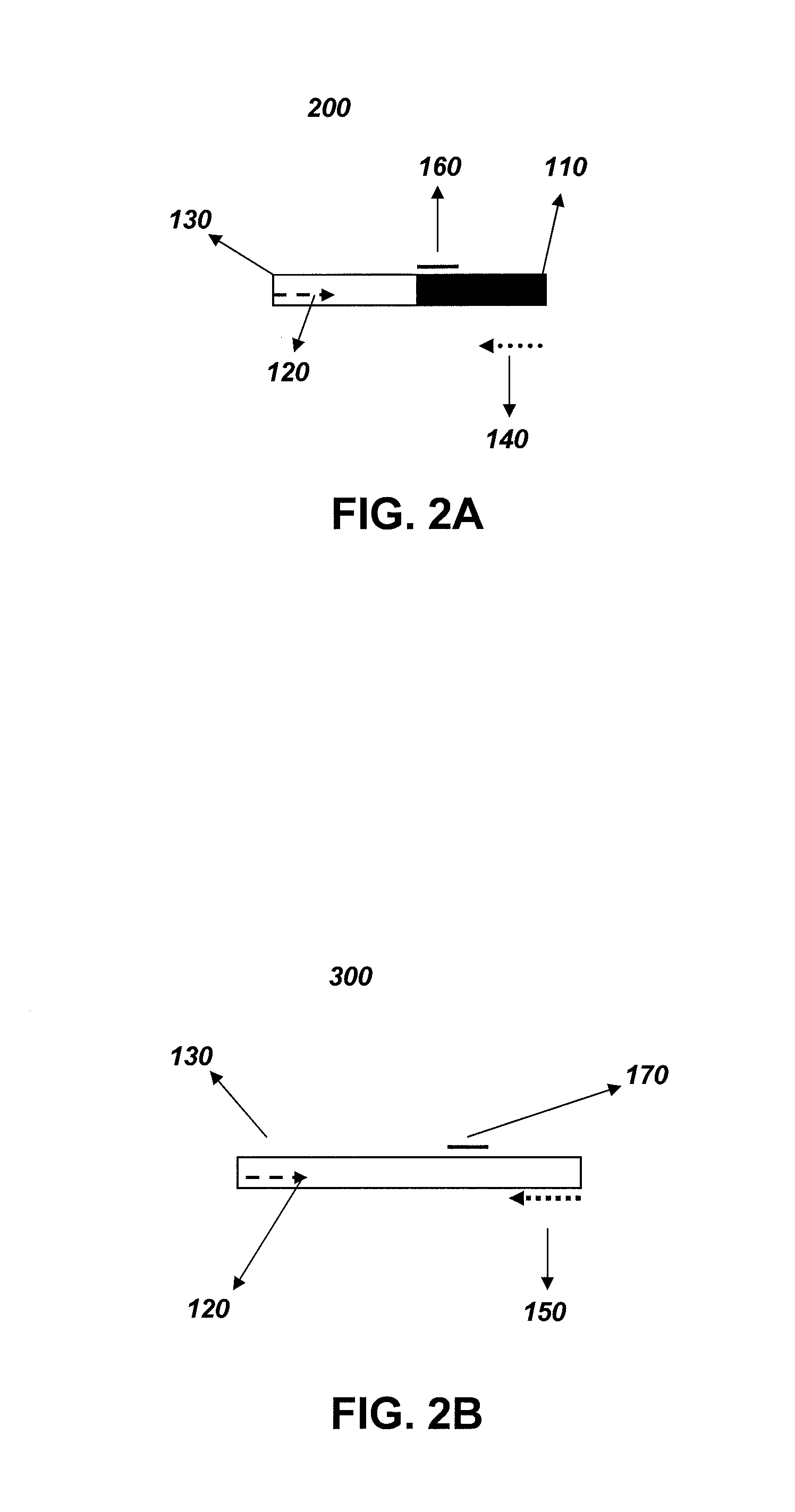Methods to determine zygosity in a bulked sample
a zygosity and bulked sample technology, applied in the direction of microbiological testing/measurement, biochemistry apparatus and processes, etc., can solve the problems of time-consuming and expensive, additional cost of testing row methods in the field, and inability to detect sensitive and robustness
- Summary
- Abstract
- Description
- Claims
- Application Information
AI Technical Summary
Benefits of technology
Problems solved by technology
Method used
Image
Examples
example 1
Plant Material
[0033]Parental lines screening: To determine if the border sequence at the transgene insertion site is highly conserved and that the event-specific primers may be used across various genetic backgrounds, a total of 92 diverse inbred lines were screened that represented different heterotic groups and locations such as North America, South America, Europe, stiff stalk, non-stiff stalk, public and proprietary sources (Table 1).
TABLE 1List of materials used for screening border sequence at thetransgene insertion site.HeteroticMaterial typeGroupOriginProprietaryLancasterNorth AmericanProprietaryFlintEuropeanProprietaryStiff stalkNorth AmericanProprietaryMixedSouth AmericaProprietaryLancasterNorth AmericanProprietaryLancasterNorth AmericanProprietaryStiff stalkNorth AmericanProprietaryStiff stalkNorth AmericanProprietaryStiff stalkNorth AmericanProprietaryLodentNorth AmericanProprietaryLodentNorth AmericanPublicStiff stalkNorth AmericanProprietaryStiff stalkNorth AmericanPro...
example 2
Seed Grinding and DNA Extraction
[0041]The seeds were finely ground and genomic DNA was isolated using the Qiagen DNEASY® kit (Valencia, Calif.). Five separate genomic DNA extractions were completed from each seed lot. The purified genomic DNA was quantitated using the QuantIt Picogreen DNA kit and diluted to standardized concentrations.
example 3
[0042]The zygosity analysis was carried out using different sets of reagents which consisted of different primer and probe sequences. The method and the reagents were designed specifically for the DAS-59122 event. A schematic of the zygosity assay design is provided in FIG. 1. The method utilized a gene-specific primer, a wild-type primer and a gene-specific / wild-type (common) primer in addition to two probes. The probes consisted of a wild-type-specific and a transgenic-specific probe. The first method incorporated all of the primers and probes within the same reaction (“single reaction method”). To increase the sensitivity of the zygosity detection, an additional method was also tested wherein two separate independent reactions were performed (FIG. 3) (“multiple reaction method”). One set of wells contained the wild-type-specific primer, common primer, and wild-type-specific probe. The other set of wells contained the transgene-specific primer, common ...
PUM
| Property | Measurement | Unit |
|---|---|---|
| nucleic acid | aaaaa | aaaaa |
| FAM fluorescence | aaaaa | aaaaa |
| VIC fluorescence | aaaaa | aaaaa |
Abstract
Description
Claims
Application Information
 Login to View More
Login to View More - R&D
- Intellectual Property
- Life Sciences
- Materials
- Tech Scout
- Unparalleled Data Quality
- Higher Quality Content
- 60% Fewer Hallucinations
Browse by: Latest US Patents, China's latest patents, Technical Efficacy Thesaurus, Application Domain, Technology Topic, Popular Technical Reports.
© 2025 PatSnap. All rights reserved.Legal|Privacy policy|Modern Slavery Act Transparency Statement|Sitemap|About US| Contact US: help@patsnap.com



